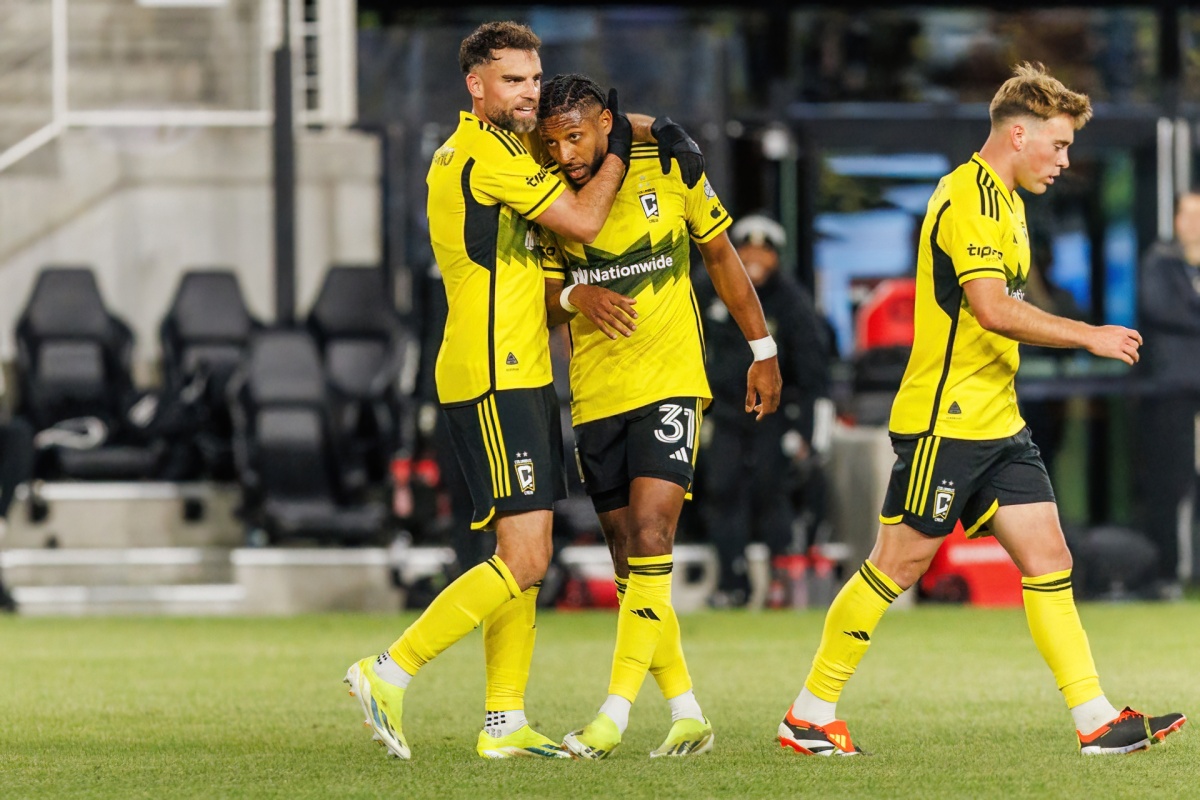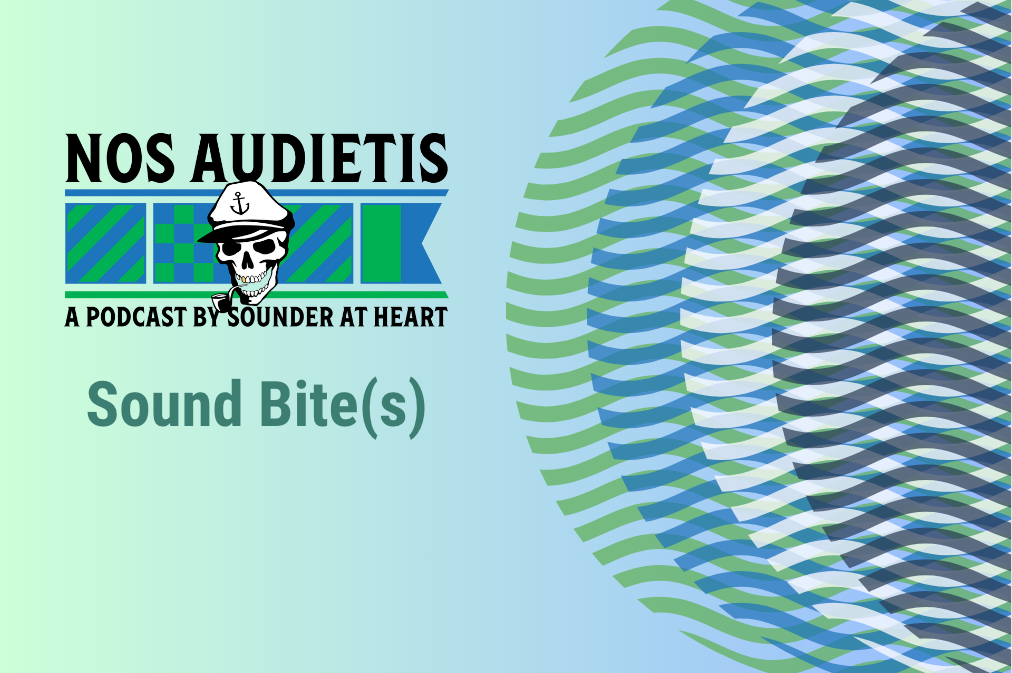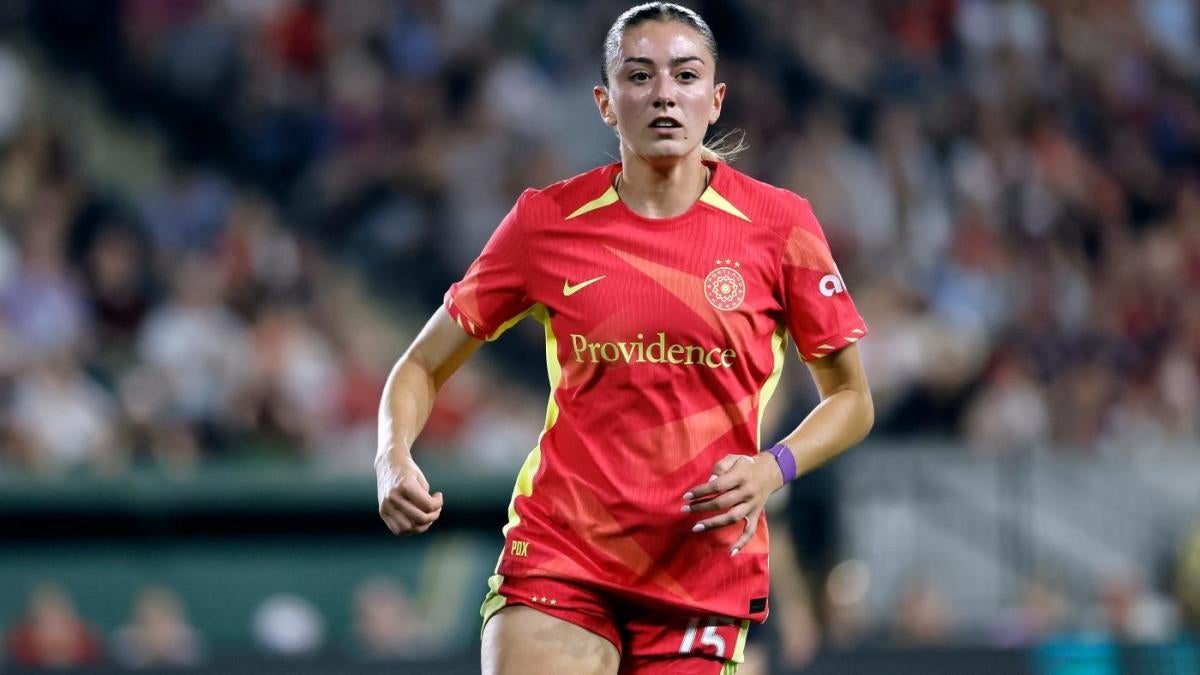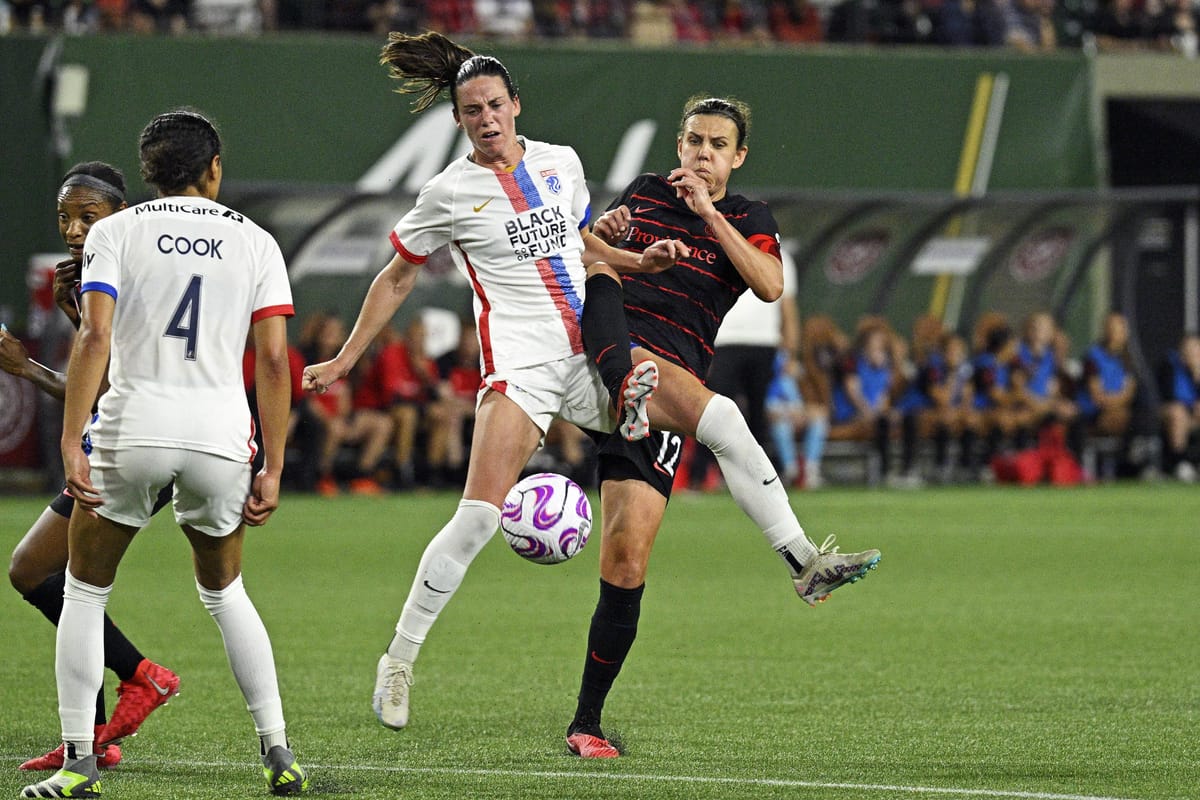

Crew tactical review: Columbus fights back to add a point at home
The Columbus Crew finished with yet another draw on Saturday, this time against the Portland Timbers. Portland struck first early in the match on a slow rolling shot that snuck its way past Patrick Schulte. The Black & Gold evened the game courtesy of a Cucho Hernandez shot that found the bottom corner in the second half. The Timbers equalized a mere six minutes later, capitalizing off a defensive mistake by Rudy Camacho. A Steven Moreira screamer from outside the box leveled the game again for Columbus, but a Cucho free kick bounced off the inside of the woodwork and did not cross the line to end the game in dramatic fashion.
The Crew started its usual first-choice lineup but made a few minor tweaks in shape before and during the game. Let’s dive into the tactical decisions that went into yet another Columbus draw.
Aggression as a double-edged sword
Teams around Major League Soccer know that the Black & Gold like to play a high-pressure and possession style of soccer. This tactical choice means that the Crew likes to aggressively gamble, whether trying to win the ball back or committing numbers forward in the attack.
Against Portland, the pros and cons of this aggressive style reared its head. First, let’s start with what went wrong for Columbus.
The most obvious example is the Timbers’ second goal of the game. The ball was played into the feet of Evander, which made Camacho step up on him to try and knock the ball out. The French center back often does this whenever the player he is marking is receiving the ball.
Camacho’s pressure pulled him out of position, allowing Evander to dummy the ball and let the pass slip behind himself and Camacho. Subsequently, Camacho ran into his running mate Moreira, taking them both out of the play entirely.
From there, Portland went on to score against an undermanned and scrambling Columbus defense. Many would say this is bad defense, but it is simply the risk Wilfried Nancy, and the Crew accepted when they signed onto playing this high-pressure system.
Almost always, Camacho wins the ball, and the Crew can start a counterattack of his defensive quality. In this instance though, Evander’s trickiness caused the veteran defender to misjudge the pass and it ended up with the ball in the back of the net.
On the other end though, the Black & Gold’s aggression paid off in a big way. Columbus’ ability to commit the outside center backs into the attack worked when Moreira hit a stunner from outside the box to tie the game.
Throughout the match and especially when the Crew were trailing, Moreira and Malte Amundsen would step into the midfield. This gave the Black & Gold more width and attacking options in the final third.
On Moreira’s goal, the ball was switched from the left side to him on the right side, where he was able to take one touch and have a shot. It was a laser to the top corner that would be hard to replicate, but Columbus will not complain.
Moreira’s goal would not have been possible if the Crew had not gambled and pushed the center backs into the attack. While Camacho’s aggression on the defensive end cost the Black & Gold, Moreira’s aggression to go forward favored Columbus. Often, the aggressive decisions are going to favor the Crew as this team meshes more throughout the season.
Formation changes
The Crew came into this game set up in the usual 5-2-3 formation, but it had a twist. Yaw Yeboah did not line up in his left wingback spot, instead, Will Sands occupied that space. Yeboah played in the attack with Diego Rossi and Hernandez but tucked inside more rather than playing on the wing.
By coming infield, Yeboah let Sands have more space outside to overlap and get into the attack. Crew fans will notice that despite this tweak, the Black & Gold did not have much success attacking in the first half.
Portland adjusted well to Columbus’ formation change and made it hard to play down the left side. One of the Timbers’ defensive midfielders would manmark Sands on the left wing, forming a five-back formation for Portland.
With Sands and Yeboah covered by the dropping midfielder and outside back, they did not get the ball much in a controlled buildup. This tactical adjustment by Portland gave the Crew fits and allowed the visitors to build a lead.
In the second half, Nancy changed things up to prevent this roadblock. Sands was substituted for Jacen Russell-Rowe, who slid into the attack to form a more fluid front three. Now Yeboah moved into his more natural wingback position while Rossi, Hernandez, and Russell-Rowe roamed the attacking third.
This allowed Columbus more attacking firepower in the attack, while also gaining a player in Russell-Rowe who can combine in close quarters with the other attackers. Portland’s defense emphasized plugging as many attacking lanes as possible to suffocate the Crew’s attack. The only way through was by whipping crosses in, or quickly combining in tight spaces.
This meant the Black & Gold had to commit more bodies forward, shifting into a 1-4-5 on offense to put Portland under an immense amount of pressure. It worked, resulting in Columbus’ first goal. With Aidan Morris, Mo Farsi, Moreira, and Rossi overloading the Timbers’ defense on the left, they combined around the defense and ultimately found Hernandez on a late-arriving run for the goal.
The in-game adjustment to bring on Russell-Rowe in place of Sands ended up being a huge move to get the Crew back in the game. It was important for the Black & Gold to recognize their plan was not working and adjust as fast as they could. They did, and it got them a point when the final whistle blew.
Continue Reading
To continue reading please choose to download our free app, or visit the original website.
Latest Portland News

League Table
Illuminate\Database\Eloquent\Collection {#1894 // resources/views/components/league-table.blade.php #items: [] #escapeWhenCastingToString: false }

























